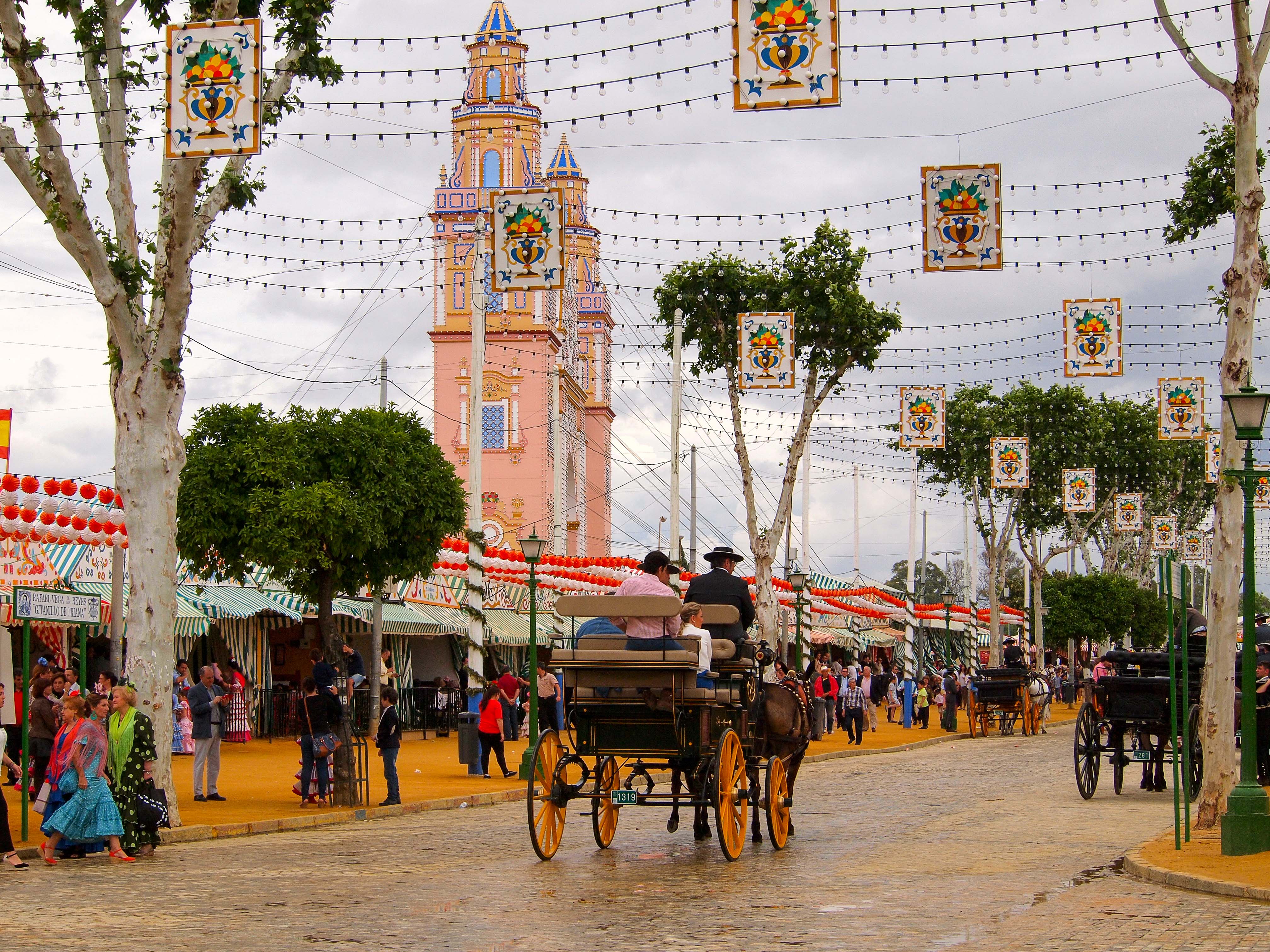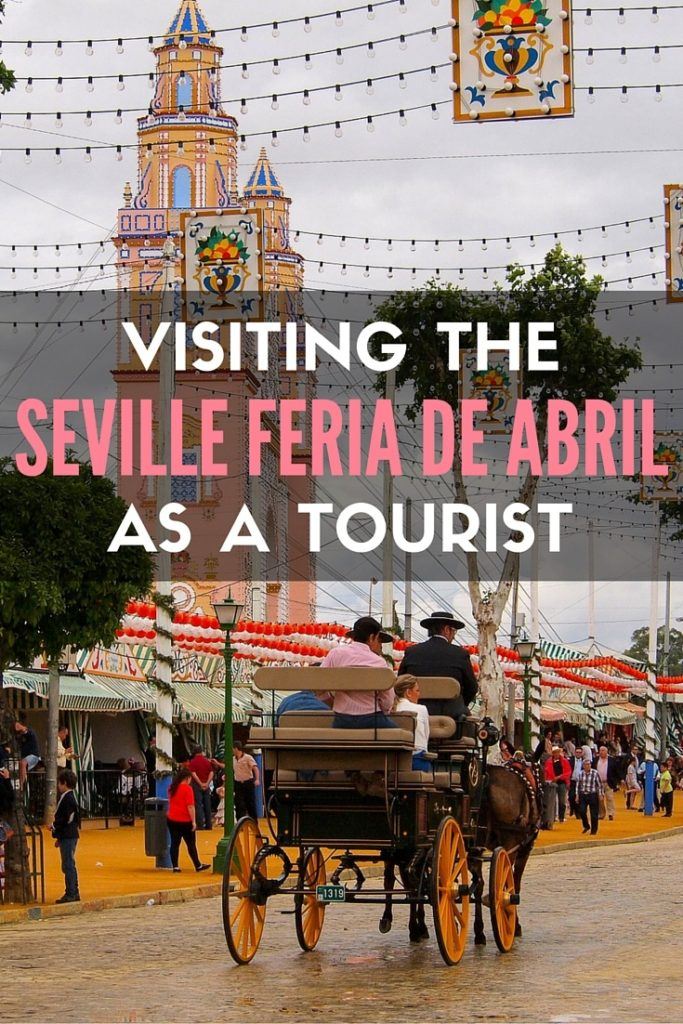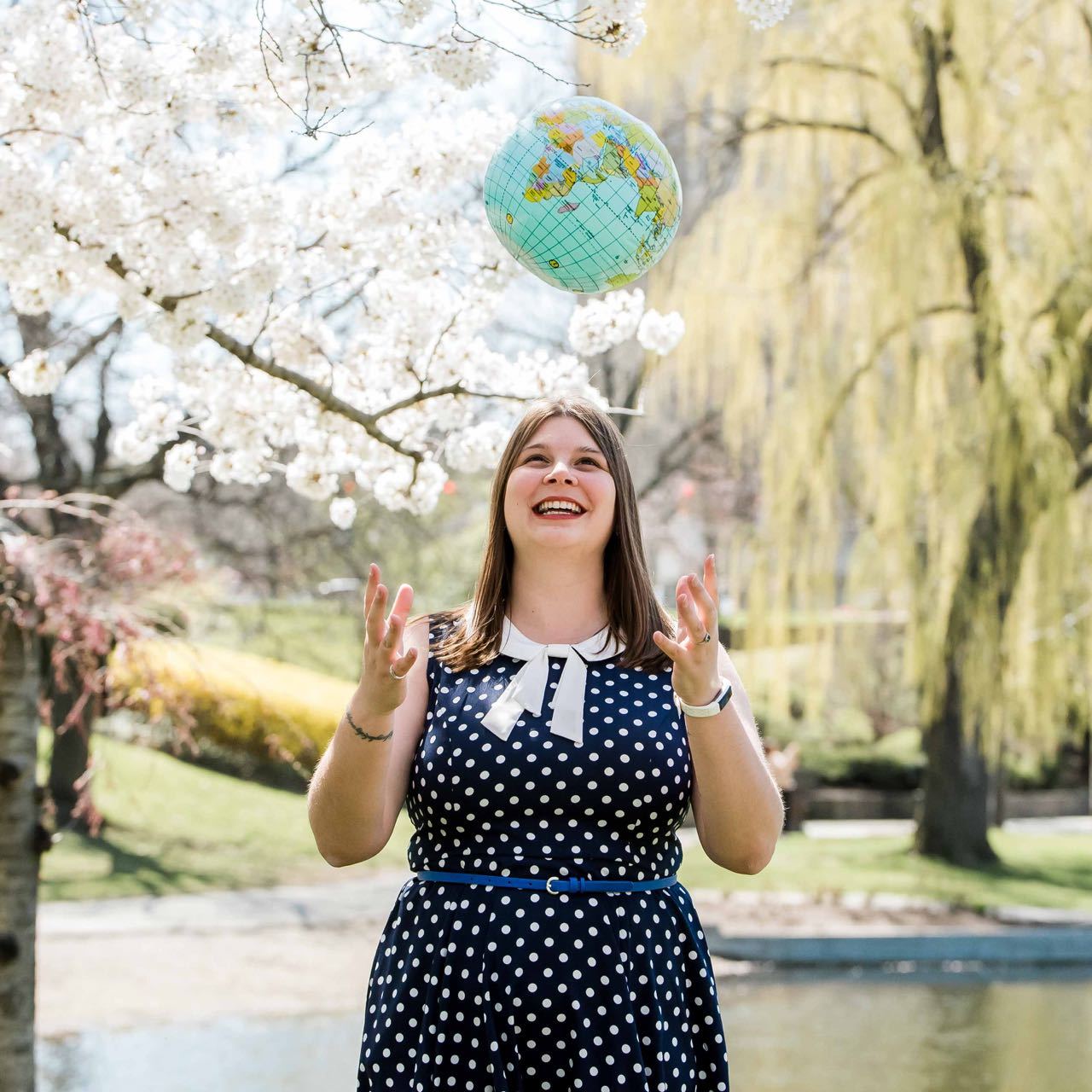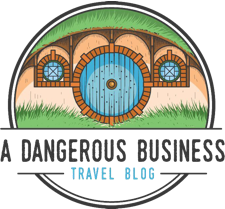Going to Seville’s Feria de Abril (+ HELPFUL Tips as a Tourist)

The Feria de Abril in Seville, Spain is a weeklong fair/festival that takes places each year in April or May in Andalusia's largest city. The fair always begins two weeks after Semana Santa (the huge Holy Week celebration leading up to Easter) ends, and is probably unlike any “fair” you've ever been to before.
I found myself in Seville during the Feria a couple years ago, completely unaware that the event was even happening! I ended up being delighted with my timing, though, and spent an entire day discovering the Feria de Abril.


If you, too, find yourself in Seville during the Feria, here are some things to know!
The Seville Feria de Abril: What is it?
The Feria has its roots not in a festival, but actually in a livestock market. Back in the mid-1800s, people would come to Seville during this time of year to sell cattle and other animals. Over the years, the market took on a more festive feel, and eventually expanded from just a couple of days to a full-blown 6 days of celebrations.
Today, you won't find any cattle for sale at the Feria. What you'll find instead are horses, carriages, colorful casetas (tents), and traditional clothing worn by just about everyone. This means bright, colorful flamenco dresses for the ladies, and the traje corto, or short suits with wide-brimmed hats for the men.


The Feria takes place at a fairground in Los Remedios to the southwest of Seville. The event covers a huge area, consisting of 15 streets lined with more than 1000 colorful casetas.

Like I said, I arrived in Seville with no idea that this event was taking place. So imagine my confusion – and curiosity – when I began to see horse-drawn carriages filled with women in fancy dresses making their way through Seville's old town one afternoon.

I quickly did some Googling and found out about the Feria and the tradition of arriving to the fairgrounds in style, either by carriage or on horseback.
I also discovered that I could absolutely go check it out as a tourist.

Seville locals (and expats) will tell you that the Feria is kind of an insular event. This is because the casetas are mostly private, being owned by companies, groups of friends, political parties, religious groups, families, etc. Which means that unless you know someone, you probably won't be dancing and drinking the night away in any of these colorful tents.
But that doesn't mean that you shouldn't go check it out anyway.
Tips for Feria de Abril as a tourist
If you find yourself in Seville during the Feria de Abril, here are some tips for checking it out as a tourist.
1. Go on a free walking tour*
Just inside the entrance to the fairgrounds (through the massive portada or main gate), you'll find an information booth. Here, you can pick up a map of the fairgrounds and some info about the Feria. Once or twice a day, you can also join a free walking tour around the fairgrounds with a local guide.

The tour is pretty basic, and it can be difficult to hear the guide if your group is large or if the part of the fairground you're in is particularly noisy. But it's a great way to get a feel for the Feria. You'll learn about the history of the festival, the outfits, and the casetas.
The guide will tell you about the first night of the Feria when the fair is officially “opened” and the fairgrounds and portada are lit up by thousands of lights. You'll also learn about the portada itself – the design is different each and every year.

The tour ends in one of the public casetas, where you can grab a drink or some food.
*I'm not 100% certain that these free walking tours are still offered, but it's worth stopping in at the info booth to ask!
2. Visit a public caseta
Speaking of the casetas – I mentioned earlier that most are privately owned. But there are some larger public ones, too, where everyone is welcome. (If you grab a map of the Feria at the info booth, the public casetas will be marked.)

The public casetas are similar to the private ones – there's usually a bar, food for purchase, and music. I went in one to see what it was all about, but didn't stick around too long since I was on my own. The Feria is definitely a social affair, and I think hanging out in a caseta would be way more fun with friends.
The casetas are lively and serving food/drinks from early afternoon all through the night – so if you do stick around, be sure to pace yourself!
You can find a list of all the public casetas here. There's one large Fiesta Mayores public caseta, and six public casetas for each of the municipal districts of Seville. Since 2017, there's also always a “Tourist Caseta” open to all located at Pascual Marquez 225-229, at the furthest point from the main entrance.
3. Try the food (and drinks!)

On opening night of the Feria, fried fish – pescaíto – is the main thing on the menu. On the other days, the food offerings mainly depend on the individual caseta, but usually include a variety of tapas.
There are some typical Feria drinks that you'll find everywhere, though. Like manzanilla (a type of sherry) and rebujito (a mixture of manzanilla and lemonade).
For dessert, you'll definitely want to seek out some churros and chocolate.
4. Walk around and enjoy the atmosphere

My favorite part of the Feria was just walking around and soaking up the atmosphere. Afternoon at the Feria is the time to see and be seen – this is when you'll see everyone arriving in carriages and on horseback, and see ladies and families walking around in their Feria finest.
(Nighttime, on the other hand, is made for drinking and dancing and partying until the wee hours of the morning.)
I enjoyed wandering around and taking photos of the colorful casetas and flamenco dresses, and watching the dancing. Because, even though people mostly dance sevillanas (local dances) within the casetas, it's not uncommon for the revelry to spill out into the streets.

There are other events and things going on during the Feria, too, such as a fun fair and nightly bullfights. I, however, do not condone bullfighting, and would never go to an event like that myself. So unfortunately I can't speak to that part of the Feria festivities.
I CAN say, though, that I had a lot of fun during the few hours I spent wandering aimlessly around the Feria grounds.
Feria de Abril FAQ
Here are a few other essential things to know:
When is the Feria de Abril?
The Feria de Abril starts at midnight on a Sunday roughly 2 weeks after Easter, and lasts for one week. The dates vary by year since Easter doesn't fall on the same date all the time, but it's usually in mid/late April or early May.
Dates of future Ferias should be April 14-20, 2024; April 4-10, 2025; and April 19-25, 2026.
Where does the Feria take place?
The Feria happens at the Real de la Feria, which is in Los Remedios to the south-west of the Seville city center, next to the river.
How do you get to the Feria de Abril?

Don't want to shell out for a carriage to drop you off at the fairgrounds? You can also take a taxi (expensive), the bus (much more economical), or simply walk. The closest metro stops are Plaza de Cuba and Parque de los Principes, or it takes a little over 30 minutes to walk from the Seville Cathedral. If you don't know the way, just follow the ladies in dresses!
What should you wear to Feria de Abril?
You certainly don't have to spend money on a flamenco dress or suit, but people DO tend to dress up to go to the Feria. I wore a dress with leggings, and most local men were wearing at least a button-down shirt and dress pants.

When to go to the Feria?
The festivities kick off after lunch time/early afternoon, and last well into the night – sometimes all night! I went in the late afternoon and stayed until about dinner time.
Where to stay in Seville for the Feria
Anywhere within Seville's Old Town would be ideal for seeing all the best sites AND visiting the Feria. My picks would be:
- Hotel Casa del Poeta – consistently rated one of the best hotels in Seville (Read reviews | Book a room)
- Hotel Las Casas de El Arenal or Hotel Becquer – both beautiful boutique hotels that you can often find good deals on.
- Hotel Derby – a great more budget-friendly option; this is where I stayed! (Read reviews | Book a room)
READ NEXT: 7 Things You MUST See in Seville, Spain
Have you ever been to the Seville Feria? If not, is it something you'd add to your to-do list in Spain?
Pin it for later:


Amanda Williams is the award-winning blogger behind A Dangerous Business Travel Blog. She has traveled to more than 60 countries on 6 continents from her home base in Ohio, specializing in experiential and thoughtful travel through the US, Europe, and rest of the world. Amanda only shares tips based on her personal experiences and places she's actually traveled!










My husband and I planned to be in Seville 3 -4 days during Feria Abril. I am wondering now if we will be able to see the other things in the town like the cathedral, as well as enjoy a walking tour around town and take in a flamenco performance. We would love to see 1 day of the fair, but would like to see more around town. Should we adjust our timing?
You can absolutely still do all the “normal” touristy things in Seville even during the Feria. I still visited the cathedral and Alcazar, and wandered around the city.
The ladies should definitely acquire a flamenco style dress and accessories for this event. Most all of the casetas are private with security guards but go to some of the public civic casetas (the La Macarena neighborhood has a good one) which are open to anyone and meet some of the locals there. It will help to know a little Spanish. If you are dressed for the occasion don’t be surprised if you are asked to dance the Sevillanas. Make some friends (Seville folks are very outgoing especially if you are a tourist) and they will then get you into some of the private casetas. The private casetas are very nice with a bar, food, and live entertainment. Great people watch! I’ve never seen so many empty sherry bottles, i.e. the morning after….LOL.